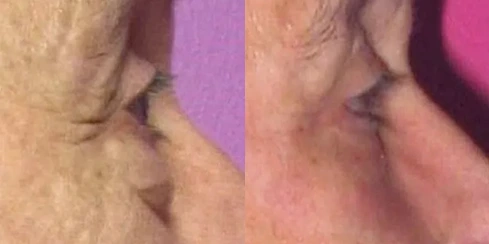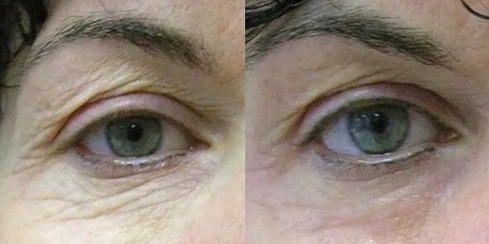Your eyes play a crucial role in facial aesthetics, but sagging eyelids can make you appear older, fatigued, or even interfere with vision. Eyelid surgery, medically known as blepharoplasty, can correct these concerns, but how do you qualify for eyelid surgery?
Not everyone is a candidate for eyelid lift surgery. A qualified plastic surgeon, like Dr. Metzinger at Aesthetic Surgical Associates, evaluates patients based on medical necessity, cosmetic goals, and overall health. Individuals suffering from excess eyelid skin that obstructs vision, eyelid drooping (ptosis), or persistent puffiness may qualify, especially if their condition affects daily life.
However, not all patients are eligible. Certain medical conditions, including severe dry eye syndrome, glaucoma, and uncontrolled diabetes, may pose risks. Additionally, factors like skin elasticity, realistic expectations, and non-smoking status contribute to determining suitability.
Understanding the requirements for eyelid surgery is essential before considering this procedure. In this guide, we’ll explore the eligibility criteria, medical conditions that qualify or disqualify a patient, and what to expect during the consultation process.
If you’ve ever wondered how to qualify for eyelid surgery, this article will provide a step-by-step guide to help you determine if you’re a candidate for this transformative procedure.
What Is Eyelid Surgery?
Eyelid surgery, or blepharoplasty, is a surgical procedure designed to remove excess skin, tighten muscles, and reduce fat deposits around the eyes. The goal is to restore a more youthful, refreshed appearance while addressing functional concerns like vision obstruction caused by sagging eyelids.
There are two primary types of eyelid surgery. Upper blepharoplasty focuses on lifting droopy upper eyelids by removing excess skin and fat. This is often performed for both cosmetic and medical reasons, especially when the eyelids impair peripheral vision. Lower blepharoplasty targets under-eye bags and wrinkles by repositioning or removing fat deposits and tightening the skin for a smoother contour.
Eyelid surgery can be performed as a standalone procedure or combined with other facial enhancements, such as a brow lift or facelift, for more comprehensive rejuvenation. While the procedure primarily improves aesthetics, many patients qualify due to medical necessity, particularly if sagging eyelid skin interferes with daily activities like reading or driving.
Understanding how eyelid surgery works is essential for determining if you qualify.
Medical vs. Cosmetic Reasons for Eyelid Surgery
Medical Reasons for Eyelid Surgery
Some patients experience significant eyelid drooping that impairs vision. In these cases, eyelid lift surgery is performed to correct functional issues. Common medical reasons include:
- Ptosis (drooping upper eyelids) that obstructs peripheral vision, making daily activities like driving difficult.
- Dermatochalasis, a condition where excess eyelid skin creates heaviness and discomfort.
- Eyelid malposition (ectropion or entropion), where the eyelid turns outward or inward, causing irritation or damage to the eye.
- Chronic eyelid fatigue or strain, leading to headaches and difficulty keeping the eyes open.
Cosmetic Reasons for Eyelid Surgery
For many, eyelid surgery is a way to achieve a younger, more alert appearance. Common cosmetic concerns include:
- Under-eye bags and puffiness, often caused by fat accumulation.
- Fine lines and wrinkles around the eyes, which contribute to an aged look.
- Uneven or asymmetrical eyelids, affecting facial balance.
Who Is a Good Candidate for Eyelid Surgery?
General Qualifications for Eyelid Surgery
Patients considering eyelid lift surgery should meet the following criteria:
- Excess or sagging eyelid skin that affects vision or creates a tired appearance.
- Fat deposits or puffiness around the eyes that cannot be corrected with non-surgical treatments.
- Good overall health, free from serious medical conditions that could impair healing.
- Non-smoker, as smoking delays recovery and increases the risk of complications.
- Realistic expectations, understanding that surgery improves but does not halt the aging process.
Signs You May Qualify for Eyelid Surgery
- Struggling to keep eyes open due to heaviness from excess skin.
- A tired, aged look even when well-rested.
- Difficulty applying makeup due to eyelid folds and creases.
- Frequent eyelid irritation or discomfort from sagging skin rubbing against the lashes.
Medical Conditions That Qualify for Eyelid Surgery
Common Medical Conditions That Qualify for Eyelid Surgery
- Ptosis (Drooping Upper Eyelids): When the upper eyelid sags so much that it blocks peripheral vision, making daily tasks like reading or driving difficult.
- Dermatochalasis (Excess Eyelid Skin): Loose, redundant eyelid skin that causes heaviness, eye strain, or chronic irritation.
- Visual Field Obstruction: Sagging skin that physically limits the ability to see clearly, often confirmed through a visual field test.
- Ectropion or Entropion: Eyelid malpositions where the eyelid either turns outward (causing dryness and irritation) or inward (leading to corneal damage).
- Chronic Eyelid Fatigue or Strain: Patients who experience frequent headaches or discomfort from constantly lifting their eyelids to see better.
Medical Conditions That May Disqualify You from Eyelid Surgery
Common Medical Conditions That May Disqualify a Patient
- Severe Dry Eye Syndrome: Removing excess eyelid skin can exacerbate dryness, leading to discomfort and impaired healing.
- Glaucoma or Uncontrolled Eye Pressure: Conditions that affect intraocular pressure may worsen after surgery, increasing the risk of vision problems.
- Uncontrolled Diabetes or Hypertension: Poorly managed blood sugar and high blood pressure increase the likelihood of delayed healing, infection, and other complications.
- Autoimmune Disorders (Lupus, Rheumatoid Arthritis): These conditions can interfere with tissue healing and increase the risk of post-surgical complications.
- Blood Clotting Disorders or Use of Blood Thinners: Patients with conditions like hemophilia or those taking anticoagulants may have excessive bleeding during or after surgery.
- Smoking and Poor Wound Healing History: Nicotine restricts blood flow, delaying recovery and increasing the risk of infection and scarring.
The Role of a Consultation in Qualifying for Eyelid Surgery
What to Expect During a Consultation
- Medical History Review: The surgeon will ask about past surgeries, chronic health conditions, medications, and lifestyle habits like smoking, which can impact healing.
- Eyelid Examination: A detailed assessment of eyelid skin, fat distribution, muscle function, and overall eye health will help determine if surgery is necessary.
- Visual Field Testing (If Medically Indicated): Patients with significant eyelid drooping may undergo a peripheral vision test to document functional impairment, which can support an insurance claim.
- Photographic Documentation: Pre-surgery photos are taken from multiple angles to evaluate the severity of eyelid sagging and plan the procedure.







